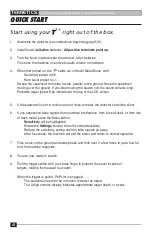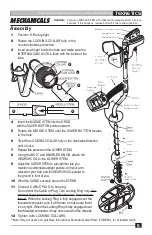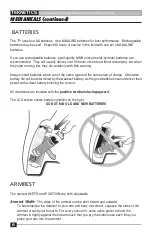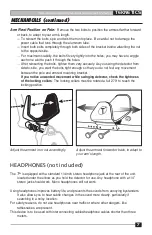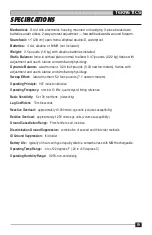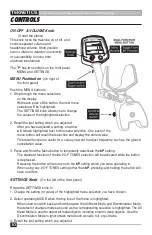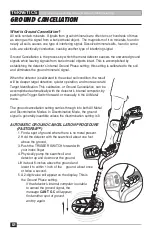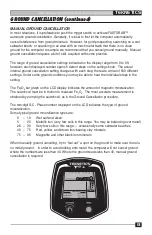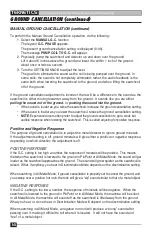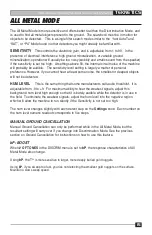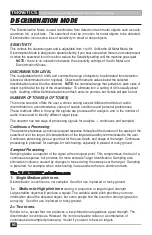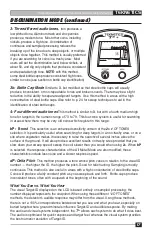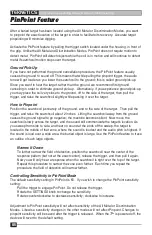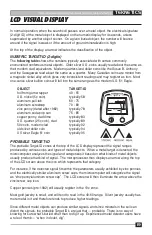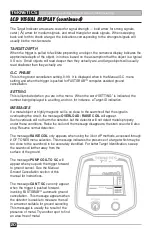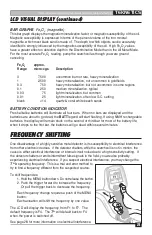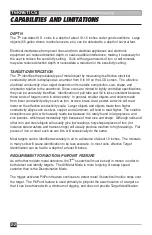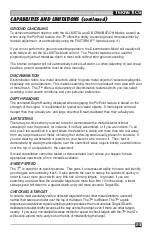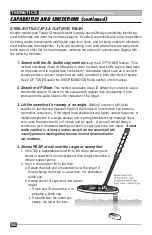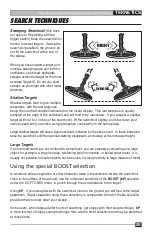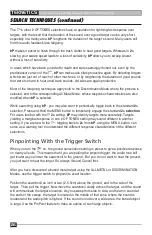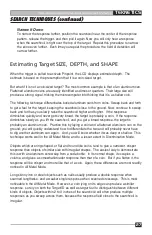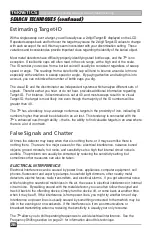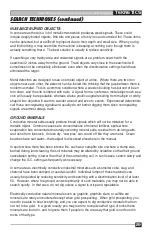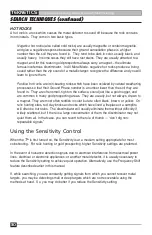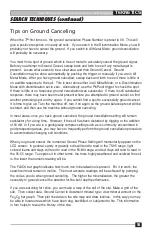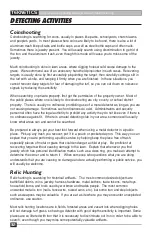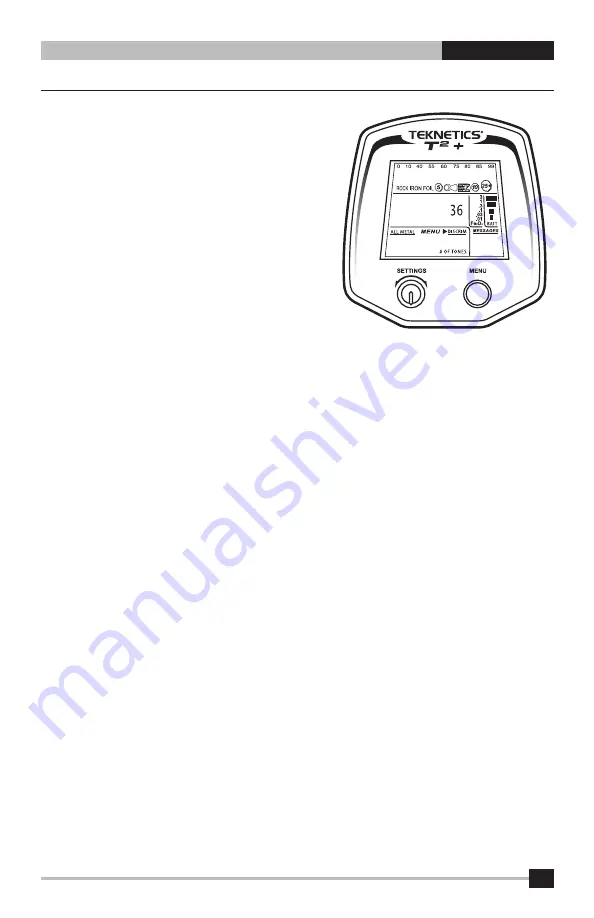
TEKNETICS
Comprehensive Operating Manual & Guide to Metal Detecting
17
DISCRIMINATION MODE (continued)
3: Three different audio tones.
Iron produces a
low pitched tone. Aluminum trash and zinc pennies
produce a medium tone. Most other coins, including
nickels, produce a high tone. A combination of
continuous and sampled processing reduces the
breaking up
of the tone due to deep objects, or multiple
objects close together. This method is usually preferred
if you are searching for coins in a trashy area. Most
users will set the discrimination level below nickels, at
about 50, and dig only objects that produce a consistent
and repeatable high tone.
NOTE
: with this method,
some steel bottle caps produce consistent high tones,
similar to coins (see section on bottle cap identification).
3b: Bottle Cap Mode
Similar to
3
, but modified so that steel bottle caps will usually
produce inconsistent, or non-repeatable, tones and broken sounds. There may be a slight
reduction in the ability to separate adjacent targets. Use this method in areas with a high
concentration of steel bottle caps. Also refer to p. 24 for sweep techniques to aid in the
identification of steel bottle caps.
4: Four different audio tones
This method is similar to
3
, but with a fourth medium-high
tone for targets in the numeric range of 73 to 79. This four-tone system is useful for searching
in areas where there may be very old coins which register in this range.
bP: Boost
This selection is an enhanced sensitivity version of the
2+
# OF TONES
selection. It is particularly useful when searching for deep targets in a non-trashy area, or on a
site where vegetation makes it necessary to raise the searchcoil several inches above the
surface of the ground. It will also produce excellent results on trashy sites provided that you
slow down your sweep speed; sweep the coil slower than you would when using
2+
. When
bP
is selected, the response characteristics of the All Metal Mode are also modified; these
characteristics include less noise and a slower response speed.
dP: Delta Pitch
This method produces a tone whose pitch varies in relation to the visual ID
number — the higher the ID, the higher the pitch. Good for relic hunting. Sampling is mostly
continuous. This method is also useful in areas with a high concentration of steel bottle caps.
Coins will produce a fairly constant pitch as you sweep back and forth. Bottle caps produce
inconsistent tones, often with a
squawk
at the beginning of the sound.
What You See vs. What You Hear
The visual Target-ID displayed on the LCD is based entirely on sampled processing; the
number displayed represents the
snapshot.
When using these different “# OF TONES”
methods, the detector’s audible response may differ from the visual. Using these methods,
there is not a 100% correspondence between what you see and what you hear, especially on
buried targets where ground minerals influence Target-ID and audible response. By making
the audio and visual systems independent, the
T
2+
allows each system to do what it does best.
The audio is optimized for quick response and target feel, whereas the visual system provides
the best numeric resolution of Target-ID.


